

LIFE
FORCE
The magazine of the photo-essay

August 2017 back issue


“A free, really high quality photo-essay magazine. Fabulous!”
Stephen Fry. British actor, writer and film maker
by Christopher Bickford
Legends of the Sandbar is an homage to the surf culture of the Outer Banks of North
Carolina. It is an ode to the wild and wooly weather of the Banks, their shape-shifting
sandscapes, their salt-battered architecture, and the commitment of a waterlogged
tribe of misfits to a life lived on the fringes of American civilization. It is a portrait of a
place, a people, and a passion, a drama set upon a wayward string of earth dangling
on the edge of the continental shelf.
Interspersed with written pieces spanning geology, history, poetry, and memory,
Legends of the Sandbar paints an picture of life on of the Outer Banks infused with a
deep awareness of the fragility of life on a barrier island. It bears testimony to the raw
beauty of lives lived close to the edge, the kinetic artistry of surfing in a challenging
aquatic environment, and the ragged glory of a boondock community tuned to the
savage power of the storm-tossed Atlantic Ocean.

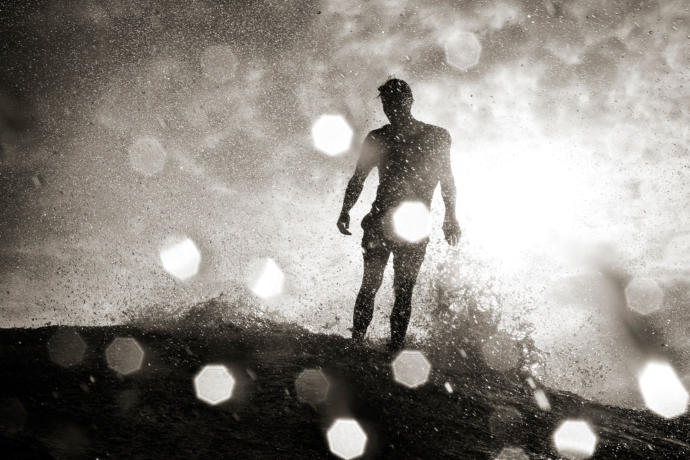
It was, from the beginning, a fool’s errand. On a diamond-speckled Outer Banks morning in January 2008, I stepped
into a pair of rubber chest waders and walked into the ocean, clutching a two-thousand-dollar camera. The idea — to
render this world of dune and barrels, of wind and rippers; to freeze-frame the exploits of the hometown surf-heroes
that inhabit this strip of sand dangling at the edge of the Atlantic Continental Shelf — had been with me for years,
spawned from countless late afternoons out in the water with a few friends, watching the low sun wrap around their
silhouettes or light their faces up against a stormy horizon, seeing them launch their fiberglass rockets into the sky.
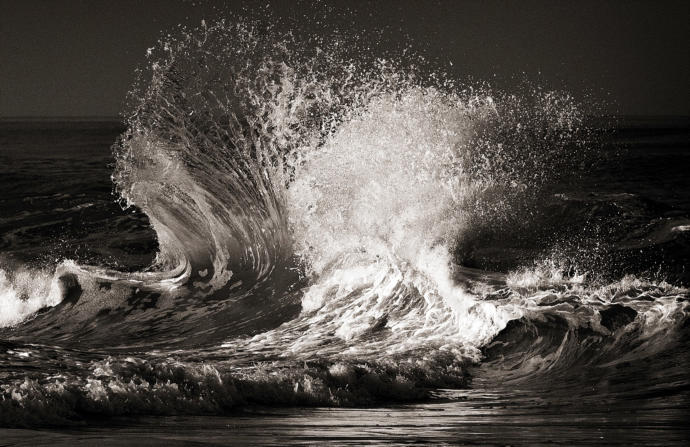
I didn’t mean to go far. I just wanted to get closer. I wanted to explore, with this light-gathering machine that was my
life’s obsession, the chaos of breaking whitewater, the fractal patterns of mist blowing off the lip of a perfect barrel, the
marbled-meat formations of seafoam being sucked back into yet another explosion of swell onto shore. Moments I’d
witnessed while surfing, swimming, or just standing at the water’s edge; moments come and gone and come and gone
with no one to bear witness to them but myself and a few friends. I wanted photographs that could survive the
intantaneous.
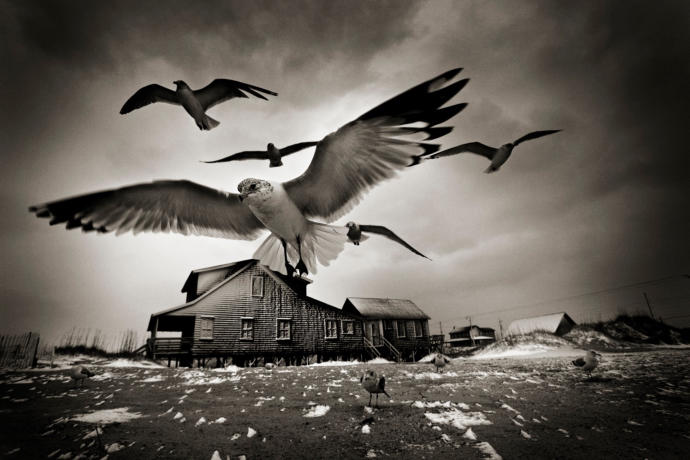
I have lived here on the Outer Banks for over fifteen years. From my birthplace in Norfolk, Virginia it’s less than a two-
hour drive, but it took me a hundred thousand miles and half a lifetime of wandering to arrive here. I still hesitate to
call it home; like many of the local residents I have a hard time staying in one place for too long. I’ve left again and again,
to pursue other projects, to take on assignments, or just to get the hell out of this godforsaken place. But as far as I
range, and as many times as I’ve taken the measure of some far-off locale and thought, I could live here, I have always
wended my way back to these shores.
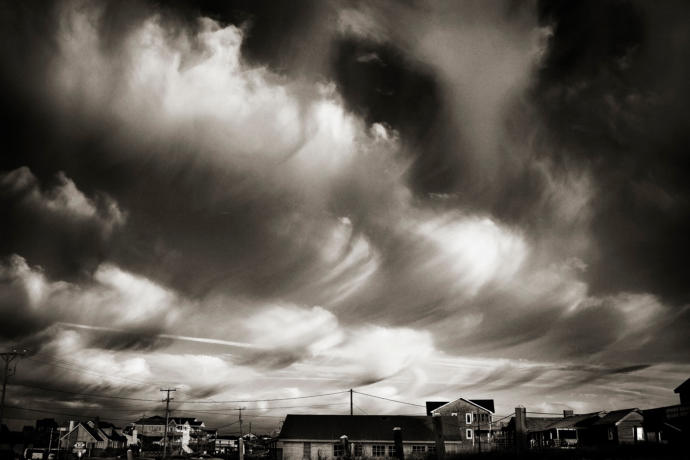
Despite my inner protests about life here, this place has a way of holding on loosely, of offering small gifts that become
difficult to live without once you’ve had them. Like clean air. Salt water. Spectral maritime light. The embrace of a small,
tight-knit, unpretentious community. And perhaps the greatest gift of all, perspective. Living on the fluid edge between
land and sea, one develops an intuition for the ebb and flow of life’s vicissitudes — good times, hard times; bonfires
and breakups; weeklong gales and bluebird days; periods of high stress, periods of extreme boredom — they all come
and go like so many waves upon the shore, some of them perfect and beautiful, some of them so small you don’t even
notice them, some of them big and messy and powerful enough to drown you, but with luck and wits and will, you
survive. Life here is a strange combination of regular and irregular rhythms, a drumbeat with shifting accents that
always comes back round eventually to the one. And, like that crazy drummer with his sneaky beats, the spirits that
dwell in this place will creep up unannounced and throw out a dazzling sunset, or a crystalline moonrise over the ocean,
or a week of weather so perfect it makes you giddy — just when you’d made your plans and bought your ticket out of
here.
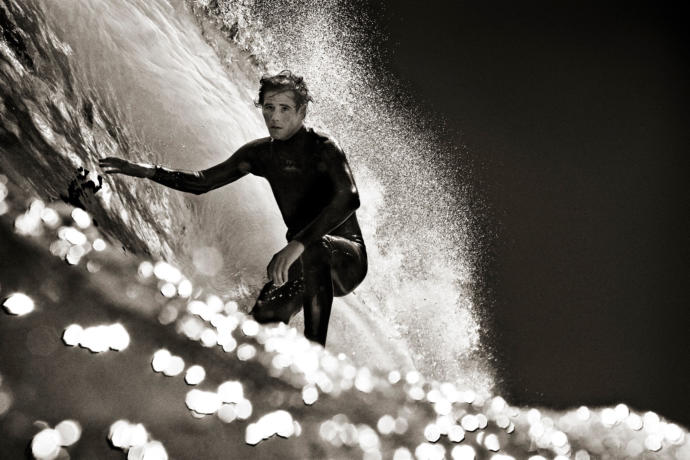
The ocean takes all comers, from burnt-out punks to born-again Christians; from pre-teen gremlins to septuagenarians.
Girls and women too, charging big waves, walking longboards with effortless style, or just floating on their boards, bikini
bottoms rising out of the water. Summer surfers, Sunday surfers; guys who won’t surf if it’s too cold to trunk it; girls
who will always paddle out, even on the iciest days. Brat packs and lone wolves, world-famous globetrotting
professionals, working folks who just want to get wet and catch a few rides before their shift begins. In the summer,
tourists, on rented foam-top boards, catching the fever or giving up in frustration. They all come, they all paddle out.
And when the forecast calls for epic, the Virginia Beach boys roll in like a band of Turks, charging at the best spots,
pulling crazy aerial maneuvers, and generally acting like they own the place.
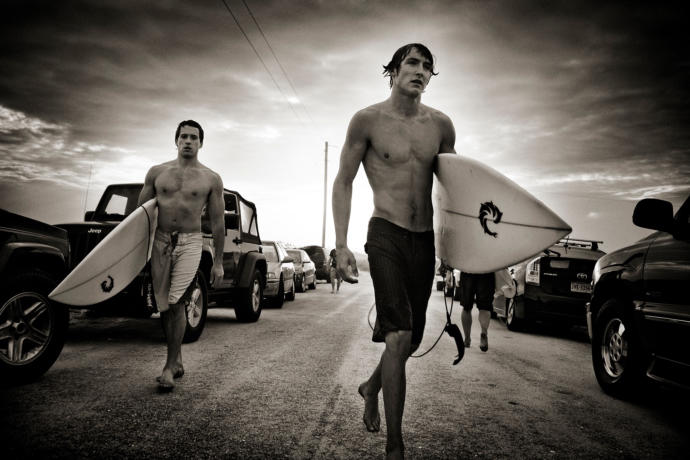
Surfers the world over know that it’s not just about the ride. Ask anybody who has logged untold hours paddling
against the current, taken it on the head more times than they can count, and sat forever shivering, waiting for the next
wave. All for a ten-second thrill? Not exactly. We celebrate the peak action, but it’s the in-between moments that make
surfing a life. Getting a new board shaped.Running into an old friend out in the water. Sharing forecast info with the guy
at the bank. Throwing on a warm fleece or flannel after peeling off a cold wetsuit, your body succumbing to the sleepy
salty endorphin rush. Checking in with the ocean, even when there’s no swell.
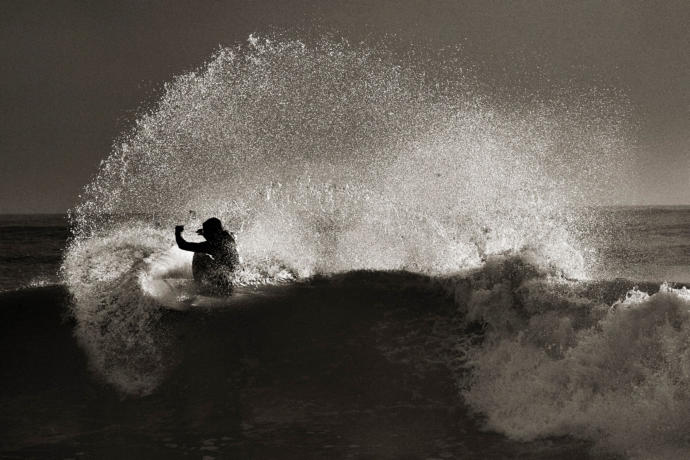
And the visuals. The God-light, the green room, the white sparkles of midday, the orange glory of late-afternoon. There
are few more sublime moments to experience in life than that of sitting out in the lineup on a perfect evening with
three or four friends, sometime around sunset, watching the world turn into a blazing canvas of reds, yellows,
magentas, blues – sometimes even greens – and catching wave after wave as the day fades. On a glassy dusk, with just
a touch of humidity in the air to obscure the horizon, the ocean reflects the colors in the sky so perfectly it feels as if
you are swimming in a sea of light.
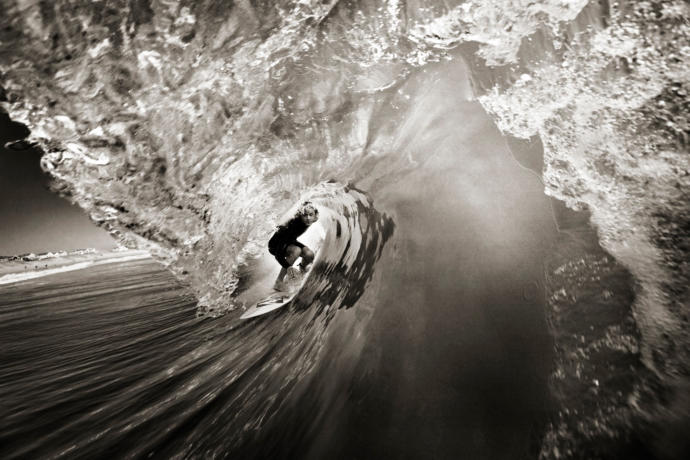
A life of surf is not conducive to the rhythms of the workaday world. Surf has no schedule. It comes on a Monday
morning as often as it comes on a Sunday afternoon. If the surf is up, responsibilities will get put on hold. Kids will play
hookie, construction workers will walk off the job site. Lawyers, accountants, and realtors will sneak in midday sessions.
The work will get done, eventually; but the swell won’t wait for quitting time. You have to strike when it’s hot, even if it
means pissing a few people off. Surf-consciousness breeds a malleable sense of time that can drive clock-driven
people crazy.
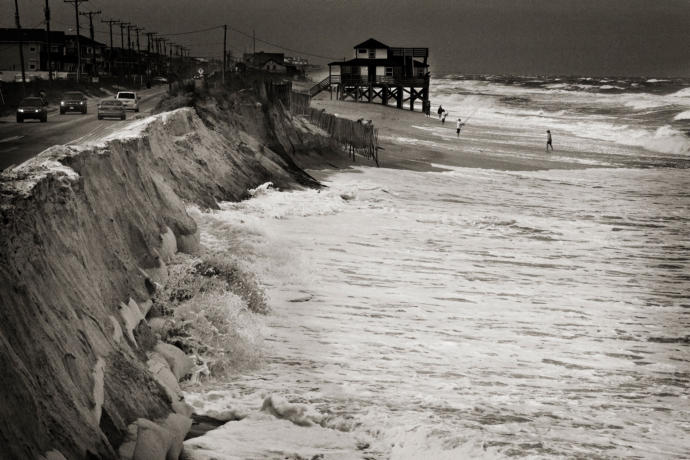
In my years on the beach I have seen the slow creep of development add hundreds of houses and dozens of
commercial buildings to the landscape, and I have watched the relentless pounding of the surf claim its fair share of
bungalows and beach-boxes from the shoreline in return. I’ve endured harsh winters and slogged through sizzling
summers, enjoyed freaky January warm fronts, and witnessed electric August storms lighting up the night for hours on
end. I’ve ridden out several major hurricanes, two of which blew new inlets straight through this thin strip of sand upon
which we have built our houses.
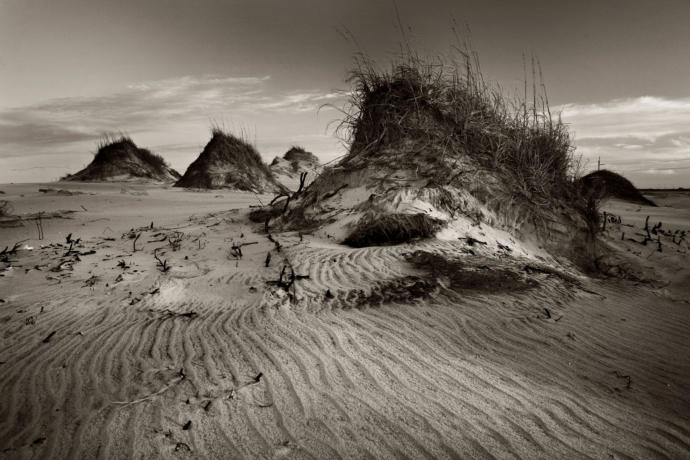
It’s hard to keep Outer Bankers from coming back home, as much of the world as they may see, as many perfect waves
as they may surf on exotic shores. Something about this place gets into your bones, makes it hard to live anywhere
else. But it comes with a price. Erosion. Sea-level rise. Climate change. These are fighting words in the political arena,
but on these beaches it’s just a part of life. The long view of geology and archaeology makes two things very clear: the
earth is constantly changing, and humans have always wrought massive change upon the environment, from
deforestation to species annihilation to agriculture to air pollution. Yes, absolutely, our presence affects geography and
climate in innumerable ways. But without us, the climate would still be changing, and whatever our fate in the millennia
to come, the earth will continue to change. It has always happened, and will continue to happen, despite our heroic
efforts to stem the tide. The oceans will continue to rise, until other geological events reverse the process, and then
they will fall again. But you and I will be long gone before then.
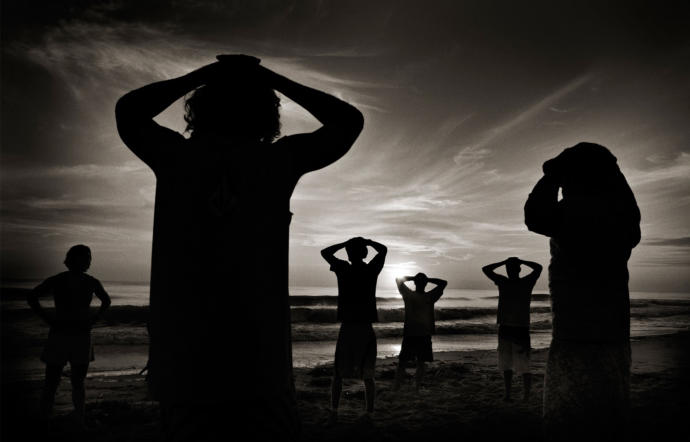
Life here is precarious; we all accept that as the price we pay. Sooner or later, a Cat Five will likely barrel in and blow this
little strip of sand to smithereens. We’ve had warnings. We joke about it, resign ourselves to it, construct possible
scenarios for other lives in other places, should we ever lose our home here. Given sufficient warning, most of us will
pack whatever we can into our trucks and head for the mainland. But some of us, like the sea-captains of yore, will just
let the storm wash over us and take us out to sea. For all it has given to us, it seems only fitting that it would one day
take our lives in return. Until that day, however, there are fish to catch, waves to ride, and many perfect days left to sit
on the beach and stare off into the horizon, watching the weather change.










